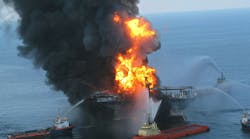Farsighted and progressive organizations realize that their reputation is their bottom line. Future-oriented CEOs and other C-suite executives understand that vision and operational discipline are inseparable from one another. Neglect either and you will pay the price.
For too long, the concept of safety in many businesses and corporations has been relegated to mid-management at best, not elevated to senior management. I generally employ a high degree of skepticism when reading the results of most surveys that suggest that a high percentage of a company’s leadership perceives safety as very important. Would you really expect them to say it isn’t? And, when they reply in the affirmative, does that mean they follow OSHA regulations or step it up a notch and go beyond what is required by law?
Every organization that has employees must ensure that safety and security are just as important – perhaps even more so – as revenue and cost projections, merger or acquisition opportunities, investor issues and customer feedback. After all, safety and security (or lack thereof) can have a devastating impact on an organization’s bottom line – and reputation. Think about the fallout from the Deepwater Horizon oil spill or the Upper Big Branch mining disaster and the repercussions.
A laboratory explosion, a plant fire, a hostage crisis, a shooting or other catastrophic event can occur at any time and any place: schools, colleges, businesses and corporations, hospitals, government facilities and military installations. An organization’s reputation is carefully built on a foundation of trust, good deeds, integrity and service over many years by many people who have placed the good of the organization – including its employees – over their personal needs. It takes just one major incident to severely taint or permanently scar an organization’s reputation – its true bottom line – if any OSHA regulation or safety measure wasn’t properly taken into account and effectively executed.
As technology and the rise of social media have made it far easier to uncover and spread damaging information, isn’t it time to take a fresh look at how an organization handles its public image and what it can do to proactively build and maintain a strong reputation, especially in light of the probability of some future safety challenge?
In my experience, corporate communications professionals have not always been a part of an organization’s leadership team – until enough public relations gaffes have occurred to force a change. It’s often the same with respect to safety professionals.
Regardless of its size, there are no fewer than five important steps that every organization should take to remedy this oversight:
- The top safety official should report to no one other than one of the members in the C-suite (SVP or VP), preferably the CFO in many organizations. Depending on the organization, the position itself should be an executive-level position.
- The CFO should ensure that she/he and the top safety official provide regular briefings to the organization’s leadership team on all safety matters. The leadership team should visit the facilities they are responsible for to personally query those on the shop floor and in offices about safety training, meetings, inspections or other compliance issues.
- The CEO should ensure that safety and security are a continuous part of any leadership development program (LDP), and that appropriate safety training is in place for all employees. Top executives, including the CEO, need to consistently – and actively – participate in the LDP.
- The top corporate communications executive should frequently collaborate with the top safety official and her/his manager (i.e., the CFO) to ensure that a full team approach is in place to anticipate and be fully prepared should any incident occur. In other words, prepare for the worst and be sure everyone knows what the plan is and how to execute it ...
- Every manager who supervises employees should have her/his performance evaluation tied to and reflect preventative safety leading indicators that she/he has taken, including co-leading safety exercises (self-directed, tabletop and live).
A company’s reputation and its brand are in many ways its most intangible assets, and safety and security play a big role. The ability to sustain an organization’s performance in an increasingly competitive global environment depends on having a workforce that is safe and secure. Safety awareness and preparation must be inextricably linked throughout the organization, beginning at the top.

